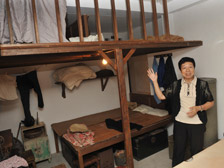
Crowded quarters:
Former Mei Ho House resident Tsui Lin-foon lived happily in a 120-square-foot unit with her eight family members.
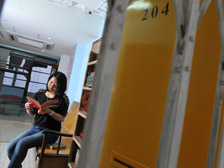
Home sweet home:
After living in a shabby rooftop flat for more than a decade, Joyce Man considered her family’s small Mei Ho House flat to be paradise.
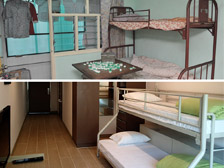
Renewed retreat:
Now fully modernised, the grade two historic building is set to become a magnet for young tourists.
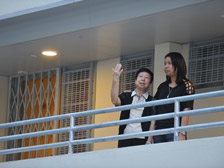
Oral history:
Former Mei Ho House residents Ms Tsui and Ms Man enthusiastically offer their services as guides.
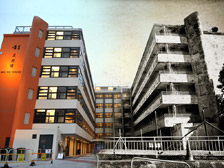
Enduring shelter:
After six decades, Mei Ho House continues to serve the community as a safe haven.
Mei Ho House a revitalised refuge
November 03, 2013
Hong Kong’s first and only remaining resettlement estate, Mei Ho House, has been transformed into a luxurious youth hostel. Now fully modernised, the grade two historic building is set to become a magnet for young tourists. An on-site museum and former residents serving as tour guides will help them envision bygone days when creature comforts were few, but smiles were plentiful.
Tsui Lin-foon, 64, moved into a tiny unit in Mei Ho House with five of her family members when she was aged five. A devastating blaze had razed the nearby shantytown they had been living in in 1953, leaving them and thousands of others homeless.
“We were satisfied even though the unit was just 120 square feet because we didn’t have to live on the street any more,” Ms Tsui said, while leading news.gov.hk on a tour of the revitalised block.
The Youth Hostel Association, which now manages the building, built the Heritage of Mei Ho House museum following exhaustive research that included listening to former residents recount their stories. It features two authentically reconstructed flats, modelled on the units of 1950s and 1970s, and 1,200 artefacts the residents donated, including photos and furniture.
After the Tsui family moved into their Mei Ho House flat, they welcomed three new family members. How did they manage to accommodate nine people in such a small space?
“Four sisters slept in the cockloft and the boys slept on the floor or the cot,” said Ms Tsui. “It was crowded - but we were happy.”
Natural distractions
There was no spare cash to buy toys, so the youngsters entertained themselves by running up and down the mountains in their backyard, and raising chickens.
“We let the chickens run free, but when the housing department officers came, we had to catch them and put them into their cage or they would be confiscated,” Ms Tsui recalled.
Living in such a crowded environment was testing, especially when up to 320 people shared just six toilets on any given floor. Despite the hardship, residents were not miserable.
“We never compared our lives with those of the rich. We were content, and we had hope.”
It was a friendly environment, Ms Tsui said, adding neighbours treated each other like family.
Joyce Man agrees. She was among the last of the Mei Ho House residents to live there before it was redeveloped.
“My neighbour gave red packets to my siblings and I every Chinese New Year. They also gave us yummy carrot cakes,” she said.
Worth the wait
Before moving into the block in the 1990s, Ms Man’s family had lived in a shabby rooftop unit - waiting 11 years before they were offered the improved accommodations.
“It was already an old building when we moved in. But to us, it was bliss,” she said. “For once, there was no water leaking into our place. I had my own bed and desk. I could hear birds singing outside my window in the morning. Isn’t that Paradise?”
In the 1970s, the flats in the building had been enlarged and modernised, with toilets installed in each unit. Ms Man and her five family members shared a 360-square-foot flat.
“It doesn’t sound big, but we felt it was big enough for us since we were able to put two bunk beds, two wardrobes and two desks in the room.”
To document Mei Ho House’s history, the Youth Hostels Association established an alumni network, enlisting more than 160 former residents as volunteers. This network reconnected former residents of Mei Ho House and Shek Kip Mei Estate, and reached out to other neighbouring residents to gather artefacts and procure oral history contributions. Some, like Ms Tsui and Ms Man, enthusiastically offered their services as guides.
Ms Tsui is pleased to see Mei Ho House revitalised as a youth hostel.
“Although it has been around for 60 years, it can still serve the community. It has a new mission, a new life.”